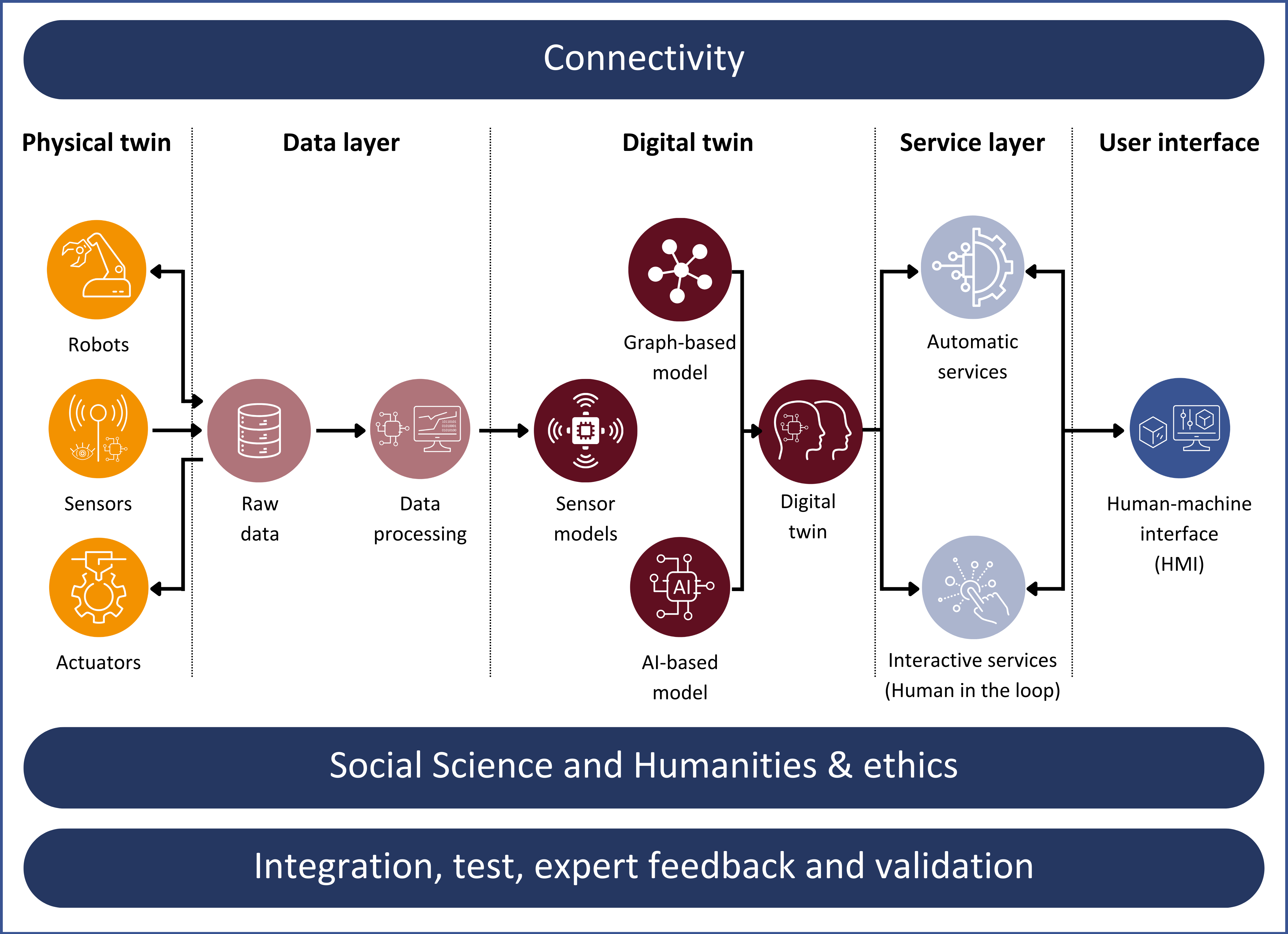COGNIMAN architecture: Why this might change how factories work — for good
3 mins to read
Imagine a factory floor where machines not only monitor themselves but also learn, adapt and alert human operators before things go wrong, all while keeping the human firmly in control. This is not a distant vision. It’s what the COGNIMAN architecture aims to deliver.
Developed as part of the Horizon Europe project COGNIMAN and recently published in the Journal of Intelligent Manufacturing, COGNIMAN introduces a fresh take on how we design and manage smart manufacturing systems, with people, not just machines, at the centre.
The shift from smart to human-smart
Over the last decade, Industry 4.0 has brought us automation, sensors and data-driven manufacturing. However, many systems have struggled to adapt to the real world, particularly when human oversight, ethics or unexpected disruptions are involved.
That’s where Industry 5.0 steps in, with its emphasis on human-centricity, resilience and sustainability. COGNIMAN responds to that shift, offering a digital twin architecture that isn’t just smart but also collaborative.
What is COGNIMAN architecture?
At its core, it is a digital twin-based architecture. A digital twin is a real-time digital replica of a physical process, system or machine. COGNIMAN builds on this concept with a seven-layer model that integrates data, services, simulation and user interfaces and all the way up to ethics and human roles.
The architecture is designed to:
- Predict defects before they happen using sensor data and AI
- Support human decisions, rather than replace them
- Adapt across industries, from glass fibre to robotics
- Keep data secure and ethically handled, complying with regulations like GDPR
Humans are deliberately in the loop
One of COGNIMAN’s key differentiators is its intentional inclusion of humans in system design. Operators aren’t just observers; they can adjust models, override predictions and feed in context that algorithms might miss.
There’s even a layer of the architecture specifically focused on ethics and human factors, addressing everything from trust and explainability to safety and well-being.
Real-world testing: glass fibre manufacturing
As part of the project, the team trialled the solution at the 3B-Fibreglass Company, a global manufacturer of glass fibres and one of the use cases in COGNIMAN.
The challenge: Defects in fibre production are difficult to detect in real-time and cause costly delays and waste.
The solution: Cameras and sensors feed data into a digital twin, which spots defects as they form. Human operators are notified with images and diagnostics, allowing them to intervene quickly.
Results so far:
- Reduction in accidents
- Improved operator comfort
- Faster defect detection and response
This human-machine partnership didn’t just make things more efficient. It made them safer and more sustainable.
A toolbox, not just a framework
COGNIMAN is more than a one solution to a single problem. It’s designed as a modular, reusable toolbox that can be adapted to different industries and production lines. Its use of open standards, AI services and cloud integration (such as AWS or Azure) means manufacturers can plug it into existing setups without starting from scratch.
And because it’s built with flexibility in mind, each business can tailor the architecture to fit their own mix of technologies, needs and human workflows.
Why does it matter?
Digital twins are already reshaping manufacturing, but COGNIMAN aims to do it responsibly, without sidelining the people who keep things running.
Instead of unquestioningly trusting automation, it offers a path forward where AI supports decision-making, systems adapt to context and manufacturing becomes both smarter and more humane.
For companies thinking about the next step in their digital transformation, this could be what they’ve been waiting for!
Learn more about the seven layers of this architecture: A deep-dive into the COGNIMAN architecture – Cogniman
Check out the full paper on Springer: COGNIMAN Digital Twin Architecture for Flexible Manufacturing | Journal of Intelligent Manufacturing
